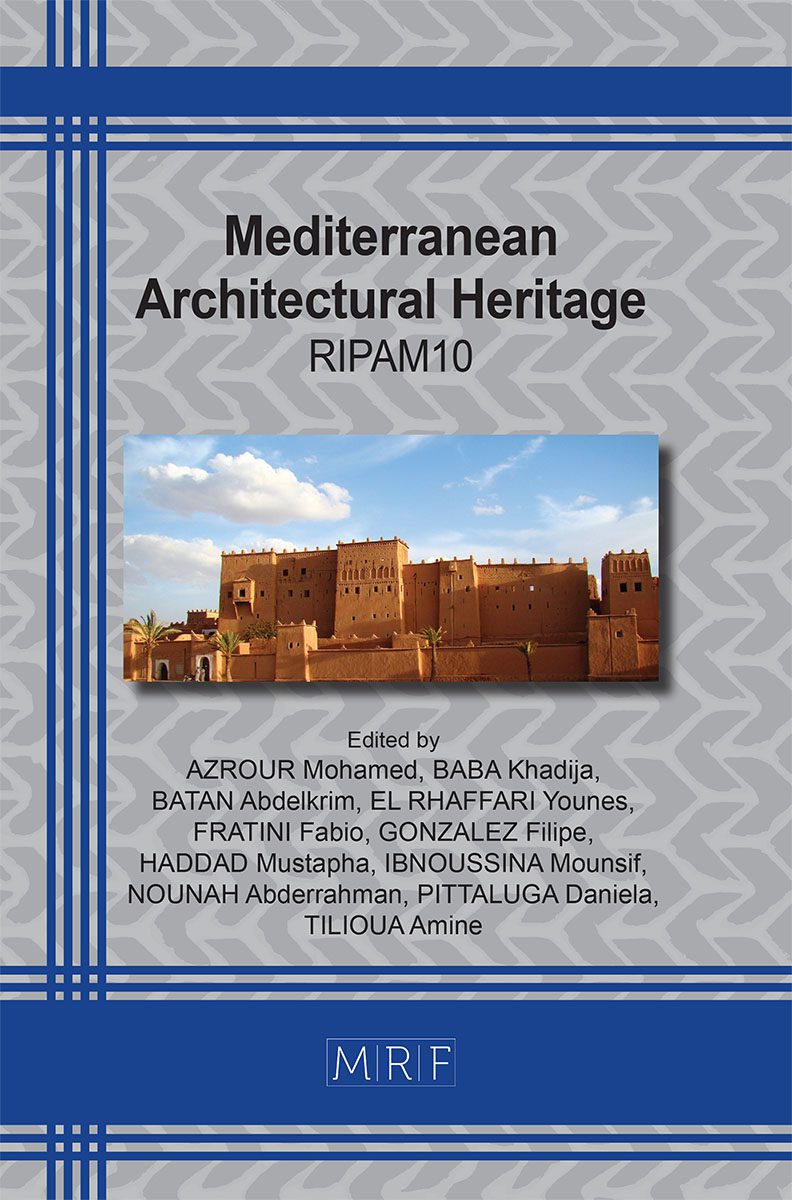Automation of Historical Buildings: Historical Building Information Modeling (HBIM) based Virtual Reality (VR)
Keltoum OUMOUMEN, Fatima ABOUBANE, Younes ECH-CHARQY
download PDFAbstract. Every civilization’s constructed legacy, identity, and history require the cooperation of several specialists and a historical database to be preserved and passed on to future generations. The difficulties of maintaining and preserving these old buildings have been successfully handled by the integration of contemporary technology. Historical Building Information Modeling (HBIM), a branch of BIM that deals with the complexity of built heritage, acquires, manages, models, and documents specific data. Virtual reality (VR) provides the benefits of intuition, realism, and teamwork. Combining HBIM and VR improves historical building visualization, analysis, comprehension, and communication, resulting in a more effective conservation process. This paper, reviews the capabilities of VR and HBIM technologies, focusing on their impact when combined in heritage conservation practices. The aim is to determine the current state of development of VR technology in the field of existing historical buildings and to identify the challenges and limitations of its application.
Keywords
Building Information Modeling (BIM), Historical Building Information Modeling (HBIM), Virtual Reality (VR), Built Heritage
Published online 3/15/2024, 4 pages
Copyright © 2024 by the author(s)
Published under license by Materials Research Forum LLC., Millersville PA, USA
Citation: Keltoum OUMOUMEN, Fatima ABOUBANE, Younes ECH-CHARQY, Automation of Historical Buildings: Historical Building Information Modeling (HBIM) based Virtual Reality (VR), Materials Research Proceedings, Vol. 40, pp 319-322, 2024
DOI: https://doi.org/10.21741/9781644903117-34
The article was published as article 34 of the book Mediterranean Architectural Heritage
![]() Content from this work may be used under the terms of the Creative Commons Attribution 3.0 license. Any further distribution of this work must maintain attribution to the author(s) and the title of the work, journal citation and DOI.
Content from this work may be used under the terms of the Creative Commons Attribution 3.0 license. Any further distribution of this work must maintain attribution to the author(s) and the title of the work, journal citation and DOI.
References
[1] I. Younus, W. Al-Hinkawi, et S. Lafta, « The role of historic building information modeling in the cultural resistance of liberated city », Ain Shams Eng. J., p. 102191, févr. 2023. https://doi.org/10.1016/j.asej.2023.102191.
[2] A. Osello, G. Lucibello, et F. Morgagni, « HBIM and Virtual Tools: A New Chance to Preserve Architectural Heritage », Buildings, vol. 8, no 1, p. 12, janv. 2018. https://doi.org/10.3390/buildings8010012.
[3] G. Nagy et F. Ashraf, « HBIM platform & smart sensing as a tool for monitoring and visualizing energy performance of heritage buildings », Dev. Built Environ., vol. 8, p. 100056, sept. 2021. https://doi.org/10.1016/j.dibe.2021.100056.
[4] S. Benford, C. Greenhalgh, G. Reynard, C. Brown, et B. Koleva, « Understanding and constructing shared spaces with mixed-reality boundaries », ACM Trans. Comput.-Hum. Interact., vol. 5, no 3, p. 185 223, sept. 1998. https://doi.org/10.1145/292834.292836.
[5] M. J. Skibniewski, « INFORMATION TECHNOLOGY APPLICATIONS IN CONSTRUCTION SAFETY ASSURANCE », J. Civ. Eng. Manag., vol. 20, no 6, p. 778 794, déc. 2014. https://doi.org/10.3846/13923730.2014.987693.
[6] X. Li, W. Yi, H.-L. Chi, X. Wang, et A. P. C. Chan, « A critical review of virtual and augmented reality (VR/AR) applications in construction safety », Autom. Constr., vol. 86, p. 150 162, févr. 2018. https://doi.org/10.1016/j.autcon.2017.11.003.
[7] S. Alizadehsalehi, A. Hadavi, et J. C. Huang, « From BIM to extended reality in AEC industry », Autom. Constr., vol. 116, p. 103254, août 2020. https://doi.org/10.1016/j.autcon.2020.103254.
[8] Y. Zhang, H. Liu, S.-C. Kang, et M. Al-Hussein, « Virtual reality applications for the built environment: Research trends and opportunities », Autom. Constr., vol. 118, p. 103311, oct. 2020. https://doi.org/10.1016/j.autcon.2020.103311.
[9] W. R. Sherman et A. B. Craig, « Virtual Reality », in Understanding Virtual Reality, Elsevier, 2018, p. 780 821. doi: 10.1016/B978-0-12-800965-9.00010-6.
[10] M. Murphy, E. McGovern, et S. Pavia, « Historic building information modelling (HBIM) », Struct. Surv., vol. 27, no 4, p. 311 327, janv. 2009. https://doi.org/10.1108/02630800910985108.
[11] D. P. Pocobelli, J. Boehm, P. Bryan, J. Still, et J. Grau-Bové, « BIM for heritage science: a review », Herit. Sci., vol. 6, no 1, p. 30, déc. 2018. https://doi.org/10.1186/s40494-018-0191-4.












